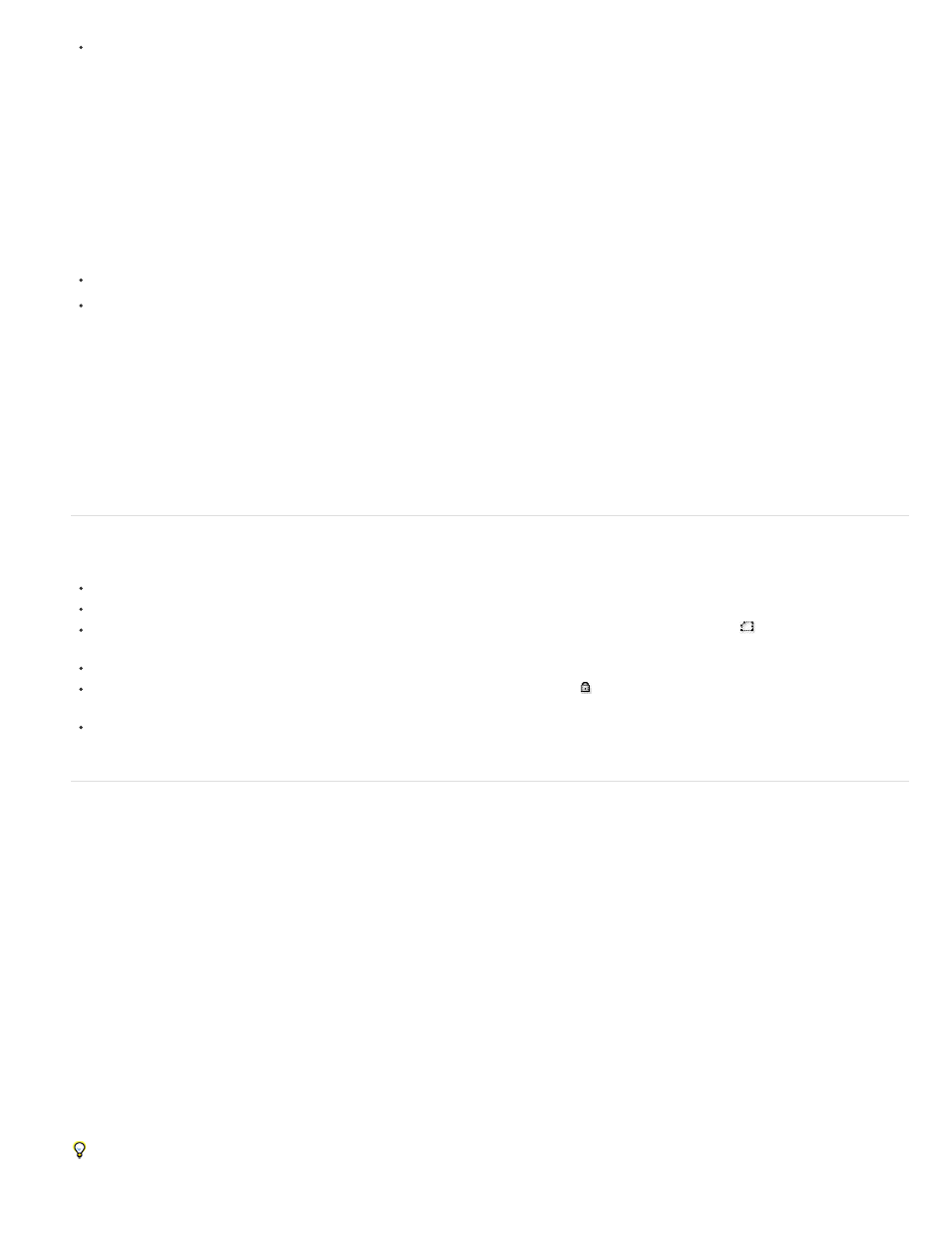View mask paths and shapes, Select shape paths, shapes, and shape groups – Adobe After Effects User Manual
Page 331

Layer selection mode
Group selection mode
Free-transform mode
Path-editing mode
In After Effects CC and CS6, use the variable-width mask feather feature for more control when feathering objects.
Online resources about rotoscoping
After Effects CS5: Learn By Video series shows how to combine motion tracking and rotoscoping to isolate and selectively
color-correct an actor's face.
Scott Squires provides a pair of movies on his Effects Corner website that show how to rotoscope, both painting and masking:
Chris and Trish Meyer provide some tips on animating masks, including using Smart Mask Interpolation, on the
Alejandro Pérez provides a script on the
with which you can use tracking data to position individual mask vertices.
Mathias Möhl provides the KeyTweak script on
with which you can modify many keyframes on a property simultaneously. With
KeyTweak, you can modify a few keyframes manually, and the script modifies the remaining keyframes in between accordingly. KeyTweak is
especially useful for Mask Path keyframes in a rotoscoping workflow.
Rich Young provides several resources for rotoscoping on his
.
View mask paths and shapes
To view mask paths for selected layers in the Timeline panel, press M.
To view selected masks or shapes in the Timeline panel, press SS (press the S key twice).
To view mask and shape paths in the Composition panel, click the Toggle Mask And Shape Path Visibility button
at the bottom of the
Composition panel.
To view mask paths in the Layer panel, choose Masks from the Layer panel View menu.
To hide a mask path while showing others, lock the mask by selecting its Lock switch in the Timeline panel, and then choose Layer >
Mask > Hide Locked Masks.
To isolate selected masks and hide others, choose Layer > Mask > Lock Other Masks, and then choose Layer > Mask Hide Locked Masks.
Select shape paths, shapes, and shape groups
You can select shape layers and their components at any of four levels of selection, referred to as selection modes:
The entire shape layer is selected. Transformations apply to the transform properties for the layer, in the Transform
property group that is at the same level as the Contents property group.
An entire shape group is selected. Transformations apply to the transform properties for the group, in the Transform
property group within the shape group in the Timeline panel.
Multiple vertices on one or more Bezier paths are selected. A free-transform bounding box is shown around the vertices in
the Composition panel. By operating on this box, you can move multiple vertices with a single transformation. Transformations apply to the vertices
themselves, which are contained within the Path property in the Timeline panel.
Only vertices are selected. In this mode, you can perform path-editing operations, such as adding vertices to a path and
moving individual vertices.
When a pen tool is active, path-editing mode is active. To remain in path-editing mode, select the Pen tool; press V or Ctrl (Windows) or
Command (Mac OS) to temporarily activate the Selection tool as needed.
327
